Do-it-yourself wooden gates, as well as a fence, are the simplest and most affordable option. The wood is easy to process and it is not difficult to find the right wood. If the sashes are damaged, they can be easily repaired or replaced. In addition, even the simplest version of the boards is quite attractive.
General information about wooden gates
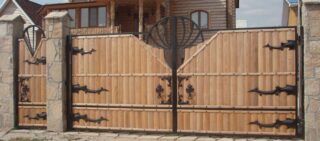
Gate - 1 or 2 wings, covering a wide passage. Their dimensions are sufficient for at least one car to pass here. Even if the owner of the dacha does not have his own car, it is better to do it, since for the construction of the building and maintenance of the summer cottage, it will be necessary to ensure the entry of freight transport. The garage version has the same dimensions.
Any wood materials are used for the gates: planed boards, picket fences, lining, wooden panels, modules from rails. They can be solid, that is, form a solid canvas, or they can look like part of a fence. They are often decorated with overhead carved details, forged, original fittings.
Wooden gates and wickets for a summer residence and a private house can be of several types:
- Swinging arms are a traditional design. Gate leaves open outward or inward, turning on hinges. This option is easiest to do with your own hands.
- Sliding - a sash, usually one, when opening moves along the facade, moving along special beams. A very convenient option when you need to save space. Negative: Guides and rollers need to be lubricated frequently.
- Lifting is an interesting modern option. The sash rises up and pivots to a horizontal position. Usually the gates are equipped with an electric drive, but it is quite easy to open them manually.
- The model with a wicket door is included in a separate category. In this case, the doorway is made right at the gate. Hinged and sliding gates can have such a design.
It will not be possible to make and install the lifting gates on your own. Complex calculations and special mechanisms are needed here.
Pros and cons of wooden gates
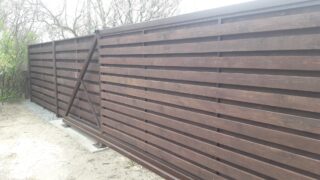
This option is traditional. Advantages:
- Low price attracts most of all. Even luxurious models with intricate carvings will cost much less than iron ones with forging. The prime cost of a simple board structure is practically zero.
- The tree is pliable: sawn, cut, shaved, polished. Even a beginner can easily decorate the gate.
- Assembly and installation take a minimum of time. The material is light, the supporting posts for the gate need the simplest.
- Quick repair - just remove any damaged part and install a new one.
- The decorative possibilities of the tree are enormous: it is varnished, treated with stains, decorated with carvings, overhead awnings. Any idea can be realized: a model made of rails laid in different directions, antique gates - with forged overhead fittings, carvings.
The disadvantages at the gate are the same as for all wooden products:
- The tree is not too resistant to moisture, so the structure must be protected: treated with antiseptics, painted, varnished.
- The treatment should be repeated periodically.
- The mechanical strength is not very high, the gate will not withstand blows from a sharp heavy object.
- The tree is on fire, so such a fence is a potential hazard.
The service life of the fence depends on the selected wood species, weather conditions, maintenance. The basis is also important: models on a metal frame last longer.
What lumber is better to choose

Do-it-yourself wooden gates are recommended to be made of conifers. Such wood contains a lot of resin, and this substance improves resistance to rain and snow and protects against decay. Another option: hardwood. However, such wood is usually too expensive.
Most often used for the fence:
- Pine is a cheap and affordable material with a fairly moderate moisture resistance. Pine is durable, easy to work with, its wood is clean and does not include knots. However, the pine is painted very hard and unevenly.
- Spruce is a light, beautiful wood with a homogeneous structure. Almost does not dry out, however, it contains less resin than pine, therefore it is less resistant to decay.
- Larch is the best choice among affordable timber. It is dense, strong, not subject to decay. Under the influence of water, larch only becomes stronger and harder. She's also very beautiful.
From hardwoods, it is recommended to take only hard ones, like oak, beech. Such a tree is very beautiful, not afraid of moisture, sun or frost, but it is expensive.
Scheme of wooden gates with a wicket of standard sizes
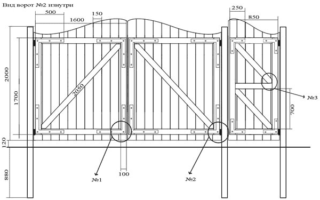
Gates for a private house made of wood are made in accordance with the requirements of SNiP. Standards:
- for the passage of cars, the width of the opening must reach 240–260 cm;
- for the passage of freight transport - 320-340 cm;
- the minimum width of the wicket is 80 cm.
Other features should also be taken into account. If trees grow in front of the gate and the sash cannot fully open, the width is made larger. However, it is undesirable to exceed 3.5 m: the wooden sash becomes unstable.
The gate is often made wider - up to 90-110 cm.
The height of the wicket and gate does not exceed 2.5 m.
Preparatory stage of construction
Preparing for the installation of a gate made of boards or lining takes a minimum of time. Its main part is occupied by calculations.
They are carried out according to the finished product drawing. The gate consists of a wooden frame and a leaf itself. The second may even be absent. Having made a drawing and using the basic titles of mathematics, it is easy to calculate the length of each rail or bar.
The area of the canvas is calculated taking into account the material. For example, one-piece shields are simply attached end-to-end to the frame, so their total area is exactly equal to the area of the canvas. The picket fence is often fixed at a certain interval, so less material is required for the canvas. The lining is often fastened together: here the amount of material corresponds to the area of the canvas. But the number is increased by 15% to take into account defects or mistakes in work.
What tools will be needed
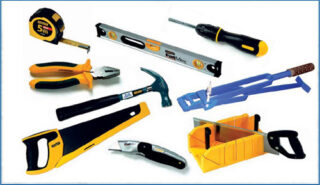
To make a gate from boards or lining with your own hands, you will need the following:
- timber for a frame with a section of 40 * 40 or 50 * 50 cm;
- boards with a thickness of no more than 25 mm, otherwise the canvas turns out to be too heavy;
- beam for supports with a cross section of at least 100 * 100 mm;
- bituminous mastic and roofing material for waterproofing;
- saw, hacksaw for wood, chisel, hammer;
- if the frame is made of a metal profile, you will need a hacksaw for metal, a grinder, a welding machine;
- bolts with plastic dowels, self-tapping screws;
- square, plumb line, tape measure.
Also, for a point foundation, you will need concrete or components for it, as well as a shovel and a container.
Step-by-step instruction
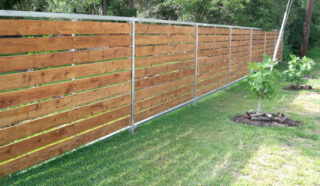
How to make and install a gate with your own hands made of wood in the country, depends on the type of design chosen and the type of material. The easiest way is to make swing doors and finish with ordinary boards or clapboard.
- At the selected site of the site, the width of the opening is marked.
- On the marks, they dig holes 1/3 deep of the height of the rack. A sand-crushed stone pillow is laid on the bottom and tamped.
- The part of the timber that will be underground is treated with bitumen mastic and wrapped with roofing material.
- The pillars are installed in the pits strictly vertically and poured with concrete. Work is continued no earlier than 2 weeks later, when the concrete has set.
- If a U-shaped opening for the gate is conceived, before installing the posts, they are connected with a horizontal crossbar - with bolts. This design is installed by several people.
- The frame of the wicket and wooden gates is assembled from boards or bars on a dry flat surface, following the drawing. The angles and the plane will be checked with a square and a level, the diagonals are measured: the latter should be the same. The frame is sheathed with a shield, picket fence, boards.
- To make a solid canvas, they act differently: knock down the primed boards with a mallet so that the spike enters the groove, and then frame the canvas with a frame of rails. With a larger sash, the structure from the back is reinforced with transverse or diagonal strips.
- Rotary bars are screwed onto the posts. Mark on them the attachment points of the hinges and make a recess with a chisel. The elements of the hinges are fastened.
- The same operation is performed with the flaps. Preference is given to loops of the "arrow" type. They are usually very decorative and give the gate an antique look.
- They put the canvas on the hinges, check the verticality of the structure and the freedom of movement of the sash.
Most often, the gate is painted or varnished. Take compositions intended for external finishing work, resistant to water.
Fence operation rules

Wooden gates on a metal or wooden frame need maintenance:
- the layer of paint or varnish should be periodically renewed;
- if the gate is U-shaped, it is recommended to put a decorative visor on the horizontal crossbar;
- if mold, rot spots, or severely dry areas appear, the boards must be replaced immediately.
Wooden gates are practical, comfortable and beautiful. They are easy to make with your own hands, and it will take a minimum of time to finish and care for them.








